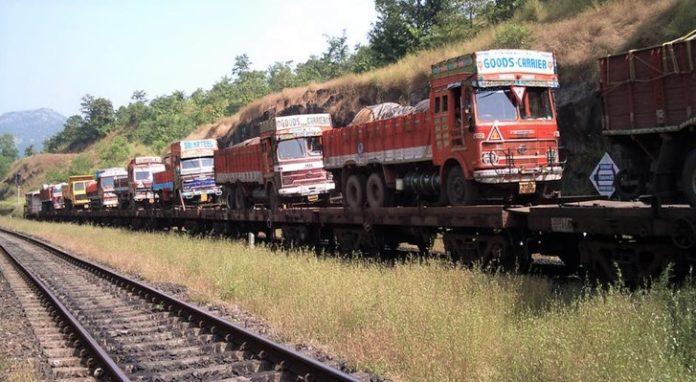Step by Indian Railway to roll off pollution in Delhi!!
Recent reports of indicating the soaring high pollution levels in Delhi have created a dislike for choosing it to be a perfect city to live as health hazards are increasing here. A report by the Centre for Science and Environment has indicated that 30% of the total particulate matter and 22% of the Nitrogen Oxide is contributed by the transport sector in Delhi Finally something deserving a big round of applause has arrived on the block in the form of the recent initiative of Roll on –Roll off service by the Indian Railways. A well conceptualized plan of the Indian Railways will help in reducing the traffic in Delhi-NCR region and thereby keeping a check over the pollution levels in Delhi. A Roll on Roll off service has been launched from Gurugram, Haryana to Muradnagar in Uttar Pradesh. Under the service, the loaded trucks will be transported on wagons on railway tracks to cover a specified distance. It is seen that about 20,000 trucks cross the Delhi-NCR territory to reach their destinations outside the city. Eight more points will be identified for starting the set up soon there. Commercial vehicles play a major role in adding traffic to roads and also contribute substantially to pollution.
The roll on roll off system is also known as the Piggy Back transport system and is already functional in India and many other countries across the globe. Under the system, a railway track is specially dedicated for the purpose where flat surface wagons can carry trucks over them. Such a system is already in practice in India being run by the Konkan Railway Corporation Limited from the Kolad in Maharashtra to Surathkal in Karnataka to cater to industrial corridor needs of Goa. In other states, the Ro Ro system is used to save time and fuel but in Delhi, the prime objective behind its application is to cause reduction in pollution and thus Railway will earn some carbon credits too. It will be a beneficial situation for both the Railways as well as the transporters as it will not only save time but will be fuel as well as cost efficient.
The system is already in practice in U.S. and Canada and hope it becomes a success in spots of India.






















